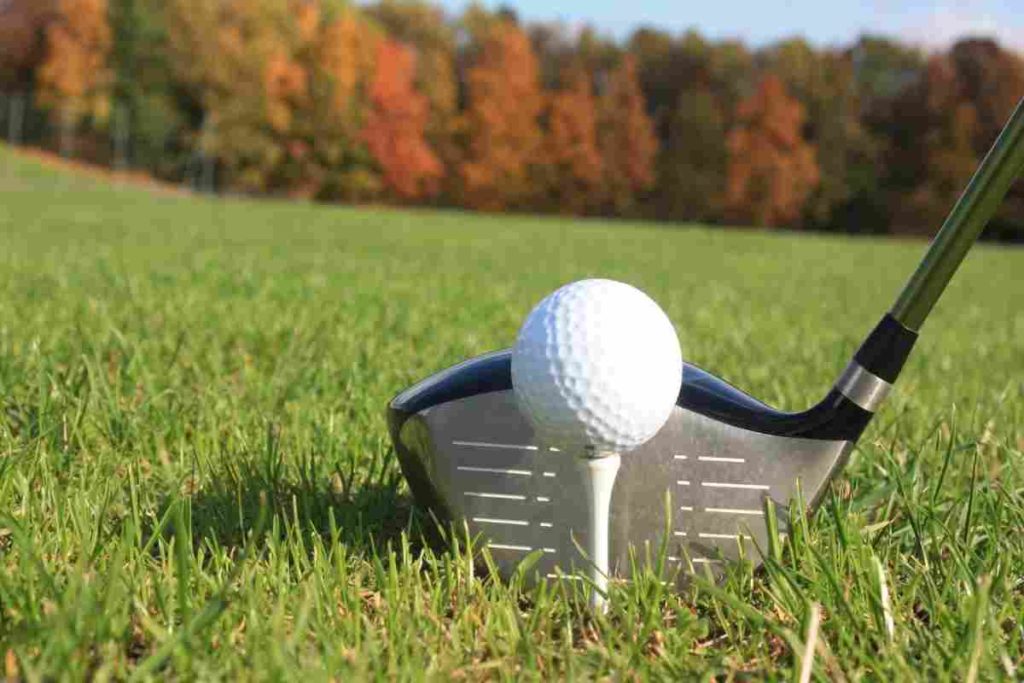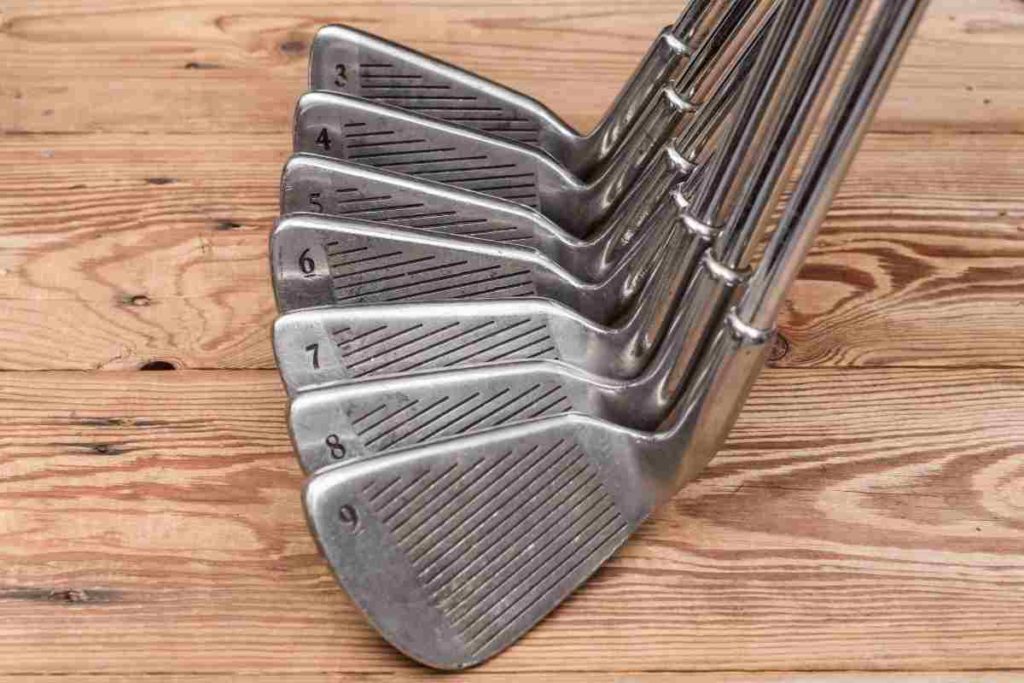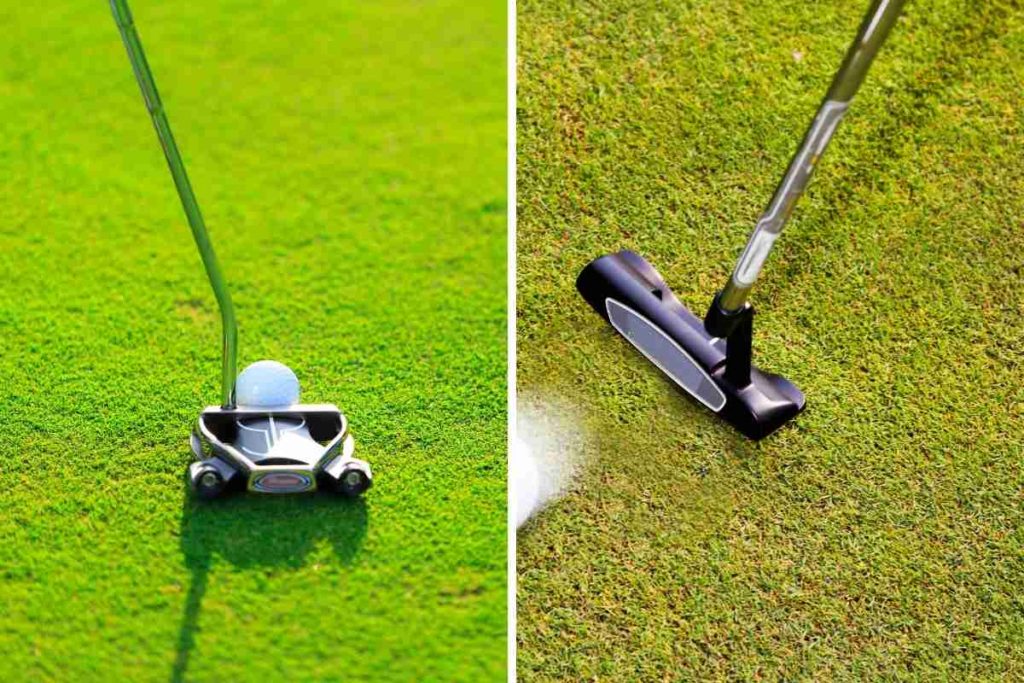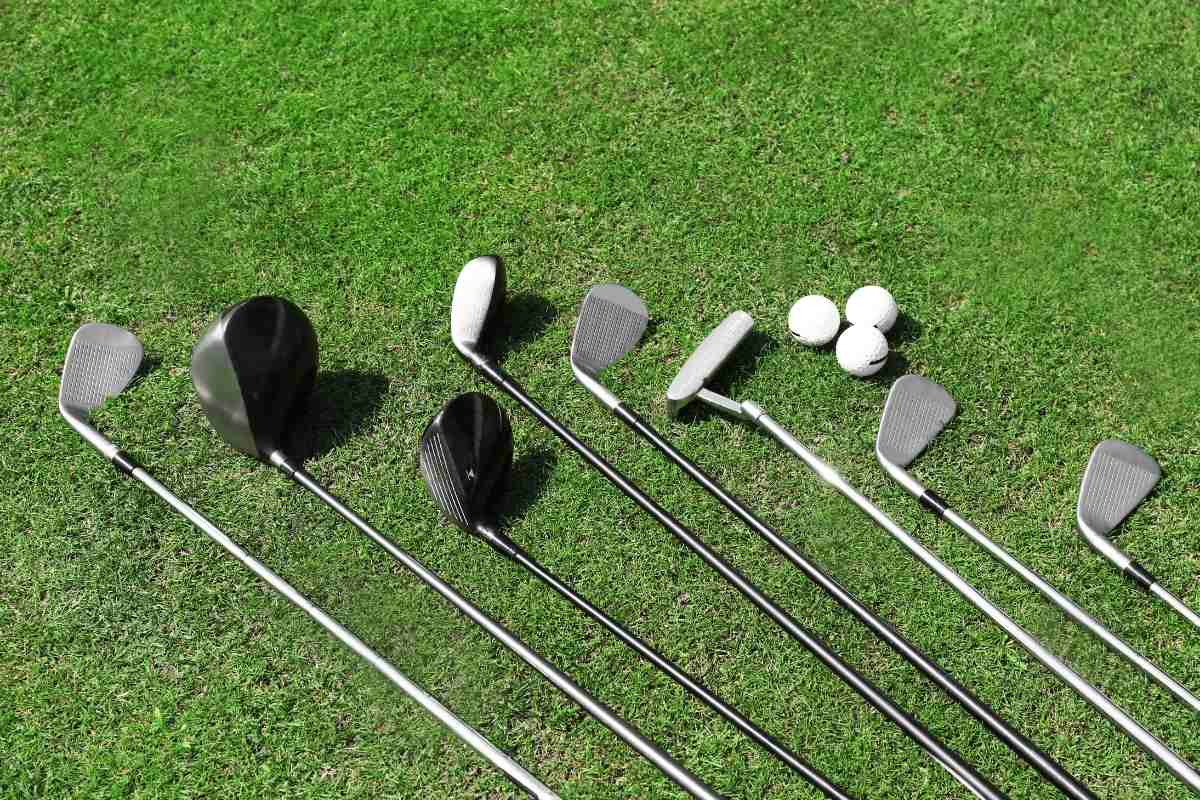If you’re new to the game of golf, trying to figure out which type of club to hit can be intimidating. Golf has many rules, but there are also lots of different types of clubs to learn about before hitting the links. Knowing what each type of club is used for will help you decide which club to hit depending on the situation.
Don’t get discouraged if you don’t remember all of the information quickly. Remind yourself that every golfer was once in your shoes. Just like starting any other type of endeavor, it takes lots of time and practice to become a great golfer.
There are six different types of golf clubs (Drivers, Fairway Woods, Hybrids, Irons, Wedges, Putters), and each type is used in different situations on the course. This guide aims to give beginner golfers a basic explanation of each type of golf club and some tips on when to use each one of them.
For more detail about the average distance for each club, I encourage you to check out this article.
1. Drivers

On most Par 4 and Par 5 holes, you’ll want to hit your driver off the tee. The driver is the most powerful club in your golf bag because it has the longest shaft length. Many golfers nickname their driver “the big stick” or “the big dog” since it will travel the furthest distance of any club in the bag.
The driver’s clubhead is by far the largest of any golf club. This makes it easier to make solid contact more consistently. However, the long shaft makes the driver somewhat hard to control for beginners and often results in some inaccurate shots like slices or hooks.
The driver has the lowest amount of loft of any club except for the putter. Driver lofts vary between 8 and 12 degrees. Most new golfers should use a 12-degree driver since it will allow them to get the ball in the air more easily.
The driver is almost exclusively used for tee shots. However, some professional golfers will hit their driver from the fairway if they want a little extra distance or want to keep their shot low to the ground. This is called hitting the “driver off the deck” and is very uncommon.
Related: 10 Best Golf Drivers for Under $300 in 2023
2. Fairway Woods
Fairway woods come in handy after a nice tee shot that ends up in the short grass. They are most commonly used on second shots of a Par 4 or Par 5 hole. There are three different types of fairways woods: 3-Woods, 5-Woods, and 7-Woods.
3-Woods
Outside of the driver, the 3-wood will travel the furthest distance when hit correctly. Though the 3-wood will have a large clubhead, it’s typically only about half the size of the driver’s clubhead. Hitting a 3-wood can be difficult for new golfers because it requires a different sweeping type of swing.
Don’t feel bad if it takes you a while to feel comfortable with the 3-wood. If you continue to struggle with it after lots of practice, consider hitting a hybrid club instead. You can swing a hybrid just like an iron, so it should be much easier for you.
A 3-wood will have a loft of 15 to 18 degrees. Just about every golfer carries a 3-wood in their bag. A 3-wood can also be used off the tee, especially if you’re struggling to hit accurate tee shots with your driver.
5-Woods
A 5-wood has slightly more loft (18 to 21 degrees) than a 3-wood and won’t travel quite as far in distance. A 5-wood’s clubhead will also be a tad smaller than the 3-wood. Not sure whether to hit a 3-wood or a 5-wood on your next shot?
5-woods used to be in almost every golfer’s bag but are less popular in today’s game because of the rising popularity of hybrids. A 5-wood is best hit out of the fairway or possibly the light rough.
7-Woods
A 7-wood is the highest lofted fairway wood with a range of 20-24 degrees. Though it’s also best to use a 7-wood from the fairway, it’s also a great option if you’re in a medium or even a deep rough.
Not many golfers carry a 7-wood, but PGA pros like Bubba Watson and Adam Scott swear by them. Both Watson and Scott claim the extra loft and smaller clubhead allow them to get out of the deep rough more easily.
3. Hybrids
Hybrid golf clubs have been around for several decades but didn’t become immensely popular until the early 2000s. Think of a hybrid as half-iron and half-wood. Engineers wanted to create an easier-to-hit club than traditional fairway woods but with better accuracy.
Many new golfers struggle to make solid contact consistently with fairway woods, so hybrids are usually the better choice for them. The long irons (3, 4, and 5 irons) can also be tough to hit. You can substitute hybrids for those as well.
Hybrids are handy for golfers because of their high level of versatility. You can hit them from the fairway, rough, or even use them to hit a low-running chip shot around the green.
Even if you’re not crazy about hybrids, it’s a good idea to keep one in your bag. The 19-degree 3-hybrid that’s in my bag gets me out of all kinds of trouble on the course!
4. Irons

Irons make up the majority of clubs in a golfer’s arsenal. Most golfers carry at least five different irons (5-9) in their bags, and some may even carry as many as seven (3-9). Irons are primarily used for approach shots when you’re trying to reach the green.
However, irons are also useful if you end up in the rough or even an annoying, pesky fairway bunker. Many folks refer to the 2-6 irons as the long irons, while the 7-9 irons are called the short irons.
The long irons have a lower loft and will travel much further than the short irons. The short irons are best used when you’re closer to the green and want to hit a higher shot that will hopefully stick near the pin. The long irons are best when you’re further from the green and need less height but more of a rollout.
There are two types of irons: blade irons and cavity back irons. Low handicappers and all professional golfers use blades because they put a premium on controlling ball flight and shot shape. Cavity back irons are a much better choice for average golfers or high handicappers because they’re much more forgiving than blades.
5. Wedges
If you’re close to the green and need pinpoint accuracy, consider hitting one of your wedges. Wedges have the most loft, so they’re the best choice for hitting a high shot. For more information on wedges, check out my previous article: Pitching, Gap, Lob, and Sand Wedge Lofts: A Complete Guide.
Most golfers carry three or four wedges. Here are the four most common wedges:
Pitching Wedge
A pitching wedge is typically used for pitch shots around the green. However, a pitching wedge is also handy for those shots when you’re just a bit too close to hit your 9-iron.
Most golfers hit their pitching wedges 10-20 yards shorter than their 9-irons. Pitching wedges normally have 48 degrees of loft.
Gap Wedge
Not all golfers carry a gap wedge, but they’re useful for those tricky shots when a pitching wedge would travel too far, and a sand wedge would fly too short. Gap wedges are meant to “fill in the gap” between the pitching wedge and sand wedge. The average gap wedge has a loft of 52 degrees.
Sand Wedge
A sand wedge should be in every golfer’s bag to help you get out of those sandy bunkers. This club is built to cut through the sand and has a loft of around 56 degrees. Though primarily used out of the sand, you can use a sand wedge for other shots like chips out of the rough as well.
Lob Wedge
A lob wedge is also called an L-wedge by some golfers. This club has the highest amount of loft and is useful if you’re trying to get over a tree and onto the green. Lob wedges have a loft range of 58-64 degrees.
6. Putters

Your putter is arguably the most important club in your bag because you’ll use it each time you’re on the green. One of the most accurate golf sayings is “you drive for show and putt for dough.”
During an average round on the links, you’ll use your putter more than any other club. There are two main types of putters, the blade putter, and the mallet putter.
Many golfers use blade putters on the PGA Tour because its small head allows for maximum accuracy. However, blade putters aren’t necessarily the best choice for all golfers because of the lightweight head. The lighter weight can lead many inexperienced golfers to make incorrect putting strokes, leading to pushes and pulls.
Mallet putters have a larger face and provide a heavier feel. Mallets are best for mid to high handicappers because they provide more stability than blade putters. This stability makes it easier to make a solid, straight-putting stroke.
Putters have a small amount of loft (3 to 4 degrees), which is just enough to get your putts started. There are many different styles of putters on the market today, so it pays to try out all of them before buying one. Many golfers refer to the putter as the “flat stick.”
Related: Mallet vs. Blade Putters: How to Know Which is Best for You
FAQS
If I’m just starting in golf, do I have to carry all 14 clubs?
No, just because you’re allowed to carry 14 clubs doesn’t mean you have to have exactly 14 in your bag. The USGA limit is 14 clubs, but you’re allowed to have less than that in your bag. Young kids can learn the game with just a few clubs.
When I was first learning the game as a young teenager, having too many clubs in my bag to choose from was overwhelming to me. I was most comfortable carrying only eight clubs in my bag until I advanced as a golfer. The USGA does not require that you carry a minimum number of clubs in your bag.
My kid wants to learn how to play golf. How much should I spend on a set of golf clubs?
You don’t have to spend a fortune on your child’s first set of golf clubs. It’s best to make sure they’ll enjoy golf before investing lots of time or resources into it. The best golf club sets for beginners should only cost around $300 to $400.
If you’re on a limited budget, you could check around at golf shops or places like Play It Again Sports for a decent set of used clubs. I’ve seen many full sets of clubs at yard sales for as low as $100. Once your kid has been playing a year or two, then you may want to consider getting them fitted for a full set of clubs.
Wrapping It Up
If you’re learning to play golf, it can be difficult to remember when to use each type of club. It’s easy to remember to hit the driver off the tee and the putter on the green, but the other clubs are more versatile and require a bit more thought. Once you get a little more experienced, you’ll find your favorite go-to clubs for tough situations.
If you’re not sure which club to hit during a friendly round, you can always ask your playing partner, especially if they have more experience than you. The best thing to do is spend plenty of time on the practice range getting comfortable with each golf club in your bag. Then, study how far and how high each of your clubs travels and take what you learned to the course for your next round.




